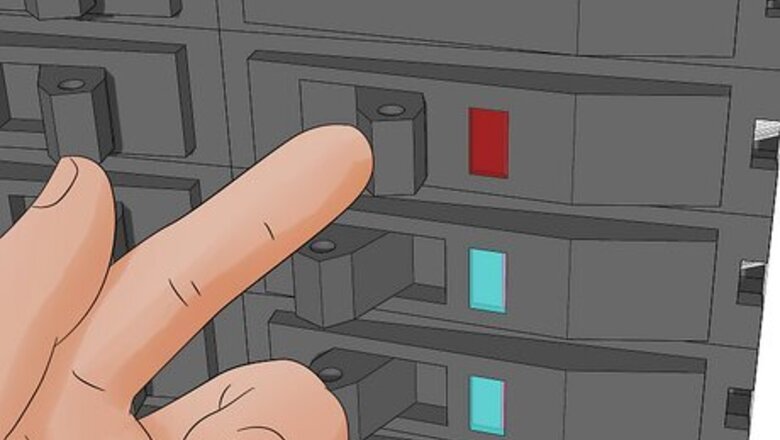
views
- Switch off your doorbell at the circuit breaker and unscrew the doorbell cover. Then, remove the wires connected to the cover.
- To install a wired doorbell, hook the wires over the new doorbell’s terminals. Tighten the terminals and then screw the doorbell cover into the wall.
- To install a wireless doorbell, screw the mounting plate into the wall and attach the doorbell cover. Then, plug the chime unit into an electrical outlet inside.
Removing the Old Wired or Wireless Doorbell
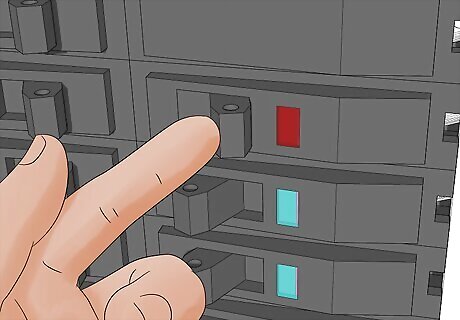
Turn off the power to your doorbell using your circuit breaker. Find your home’s circuit breaker or fuse box and flip the switch that sends power to your doorbell to the “Off” position. While only a weak electrical current runs to your doorbell, this stops the flow of electricity to protect you from any accidents as you work. Removing and replacing your doorbell without turning off the power first can potentially result in an electric shock. If you’re not sure whether you turned off the correct switch, press your doorbell to see if it works.
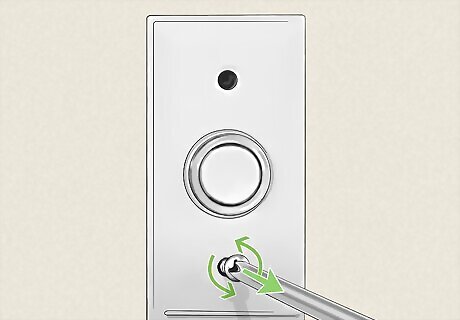
Remove the screws on the doorbell cover and pull it off the wall. Use a screwdriver to remove the mounting screws securing the doorbell cover to your house; there is typically 1 screw above and below the button. Then, pull the cover off of the wall to expose the wires. Some wireless doorbells have 2 components: the doorbell cover and a mounting bracket. For these models, simply slide off the doorbell cover. Then, use a screwdriver to remove the mounting bracket from the wall.
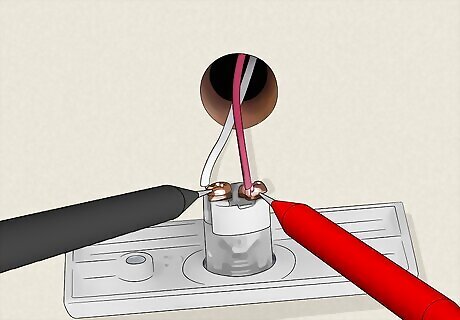
Check that no power is running through the wires with a voltmeter. Even though you turned off the circuit breaker, it’s important to ensure the wires are completely free of electricity before you touch them. Simply use a voltmeter to touch both wires with the probe. If the voltmeter beeps, the doorbell still has power. If your doorbell still has power, you might have turned off the wrong switch on your circuit breaker. Simply find the right switch on your breaker and turn it off. If the old doorbell wasn't working, use the voltmeter to see if the wires work before you install the new doorbell. If they don’t work, consider switching to a wireless doorbell instead.
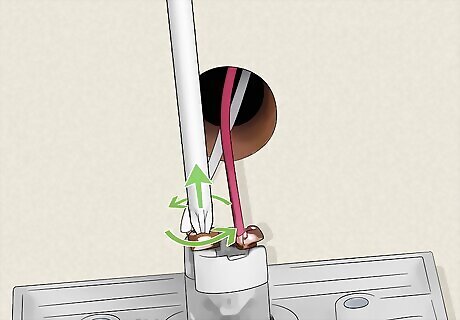
Loosen the screws inside the doorbell and remove the wires. On the inside of wired doorbell covers are 2 wires hooked around separate screws, which are called terminals. Simply loosen the 2 screws using a screwdriver and detach the wires. Tag the wires with tape or mark the terminals with the color of the wire so you remember which wire goes to which terminal. Or, simply take a picture of the wires before you remove them.

Tape the wires to the wall and remove the old doorbell. Use electrical tape to secure the wires to the wall so they don’t fall back into the hole in the wall. Then, simply remove the old doorbell cover and set it aside. Whether you’re replacing your old doorbell with a wired or wireless one, the new doorbell sits in the same spot as the old one. If you’re replacing a wired doorbell with a wireless one, tape the wires together with electrical tape. Then, tuck the wires into the hole in the wall, as you won’t need them. Throw your old doorbell in the trash or consider getting it repaired and using it as a backup in case you experience a problem with the new one.
Installing a New Wired Doorbell
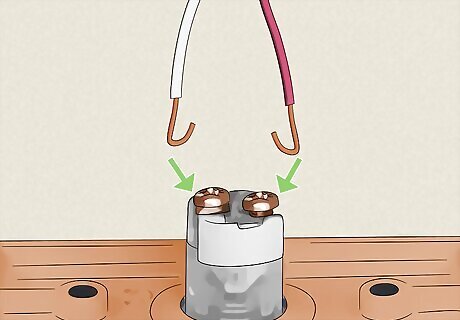
Bend the end of the wires and hook them around the doorbell’s screws. Use a pair of pliers to bend the wires into a J-shape. Then, grab your new doorbell and loosen the terminal screws with a screwdriver. Take the wires and hook them around the screws, using your tape markers or photo as a reference to ensure they are attached to the correct terminal. Warning: Make sure the switch to your doorbell on your circuit breaker is still in the “Off” position when installing your new doorbell. Follow your doorbell’s installation instructions to ensure you’re attaching the wires to the correct terminals. For some doorbells, it doesn’t matter which wire is connected to which terminal. If your wires look damaged, use wire cutters to snip off the damaged ends. Then, use a wire stripper to peel back some of the wire casing so ½ to 1 inch (1.3-2.5 cm) of the wire is exposed.
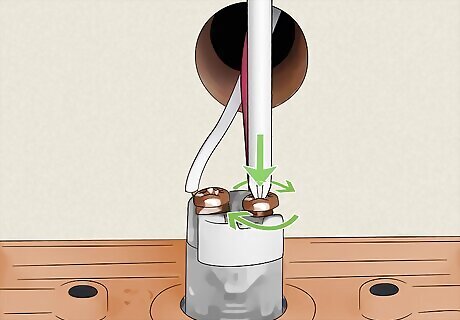
Tighten the screws around the wires. Use a screwdriver to secure the wires around the screw terminals. Simply tighten the screws so the wires don’t come loose, but don’t tighten them so much that the wires are crushed, which can damage them.
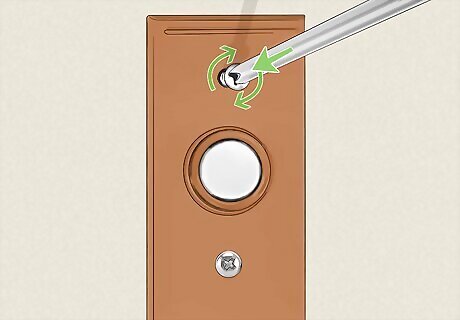
Screw the doorbell into the wall. Tuck the wires into the hole in the wall or inside the doorbell cover. Then, simply screw the cover into the wall using a screwdriver. If your new doorbell isn’t the same size as your old one, use a drill to make new holes where the doorbell attaches to the wall. If your doorbell cover attaches to a mounting plate, screw in the mounting plate first. Then, attach the doorbell cover. Use plastic anchors to keep your walls from getting damaged by the screw threads. Attach the screws in the upper corners of the doorbell first to hold it in place while you finish tightening the bottom corners.

Turn the circuit breaker on and test out your doorbell. Go to your circuit breaker and flip the doorbell’s switch back to the “On” position. Then, press the doorbell and listen for the chime. Ask a family member or friend to press the doorbell as you walk through the house to confirm it’s audible from every room. If your doorbell doesn’t chime, there may be an issue with the wiring. Check that the wires are running to the right terminals and that each connection is secure. A dead doorbell button can also cause the doorbell to not work. To replace the button, just unscrew the faceplate and insert the new button. If the doorbell still isn’t working, a bad wire or transformer might be the culprit. Call an electrician to come check your doorbell’s power source and replace it, if necessary.
Installing a New Wireless Doorbell
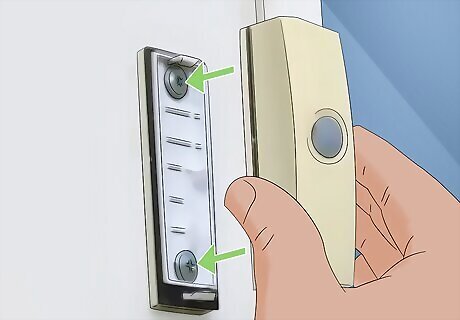
Screw in the mounting plate and attach the doorbell. Most wireless doorbells come with a mounting plate that attaches to the wall while the doorbell cover and button rest on top of it. Simply use a screwdriver to secure the mounting plate to the spot where the old doorbell was. Then, snap on the doorbell cover. Warning: Keep your circuit breaker off when installing a wireless doorbell. While these doorbells don’t have wires, this protects you if you accidentally touch the wires of your old doorbell. If your new doorbell doesn’t line up with the existing holes from your old doorbell, drill new holes where the doorbell attaches to the wall. Depending on the type of doorbell you’re installing, you might have to add batteries before you attach it to the wall.

Find a spot for the chime unit and plug it in. Wireless doorbells come with their own chime units, which are the devices that emit the doorbell sound inside your home. Most units plug directly into a wall outlet. Simply find a spot inside your house that’s within the doorbell’s signal range and plug in the chime unit. Choose a central spot to plug in your chime box so you’ll hear the doorbell wherever you are in the house. Consult your doorbell’s instructions to find out the signal range for the doorbell and chime unit. If you place the chime unit out of the range, your doorbell won’t work.
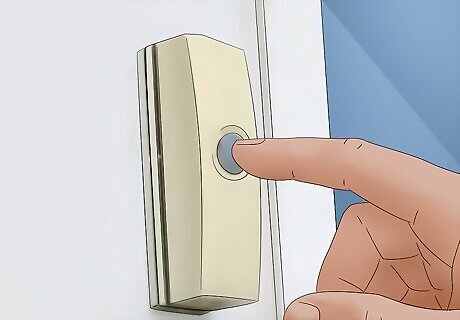
Test your doorbell to ensure it works. Push the doorbell button and listen for a chime inside your house. Then, ask a family member or friend to press the doorbell as you stand in different rooms to make sure you can hear the doorbell throughout your home. Feel free to turn on your circuit breaker after testing your doorbell.
Replacing a Chime Unit
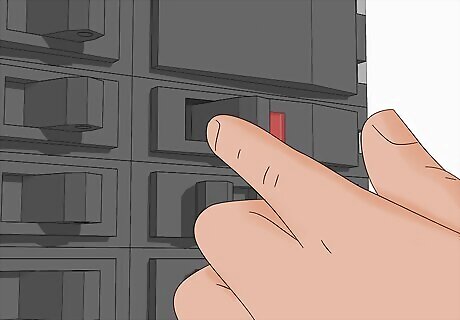
Turn off the power to your chime unit on your circuit breaker. Your wired doorbell’s chime unit is the small, speaker-like box inside your house that emits sound when you press the doorbell. The chime unit is connected to electrical wires, so to ensure your safety as you replace it, flip the switch that sends power to your chime unit to the “Off” position. Most chime units are located in your home's foyer or a hallway that’s close to the front door. When you press your doorbell, a small current is directed from the button to the chime unit, activating a series of sounds and chimes.
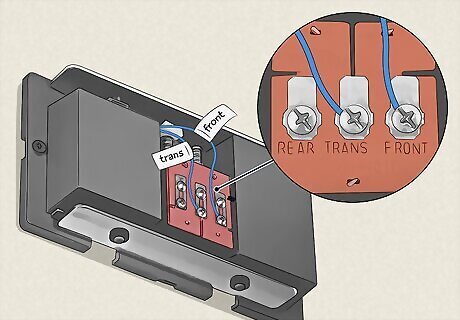
Remove the chime unit’s cover and label the wires. Simply lift the cover off of the chime unit or use a screwdriver to remove the screws if it’s attached to the wall. With the cover gone, you’ll see 3 wires connected to 3 different screw terminals labeled “Rear,” “Trans,” and “Front.” Tape or color the wires with a marker so you remember which wire attaches to which terminal. Note: Use a voltmeter to check that no power is running to the wires before you touch and label them. Some chime units only have 2 wires connected to the terminals, while some units only have 2 terminals. The “Front” terminal goes to the front doorbell while the “Trans” terminal goes to the transformer. The “Rear” terminal is optional and connects to a separate doorbell for the back door.

Loosen the screws, unhook the wires, and remove the chime unit. Use a screwdriver to loosen the terminal screws and detach the wires. Then, remove the screws holding the chime unit to the wall with your screwdriver.
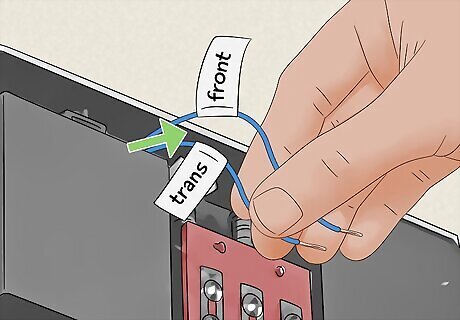
Pull the wires through the new chime unit and screw it into the wall. Thread the wires through the opening on the back of your new chime unit. Then, hold the unit in place as you use a screwdriver to attach it to the wall. If your new chime unit doesn’t fit over the old one, use a drill to make new holes where the unit attaches to the wall.
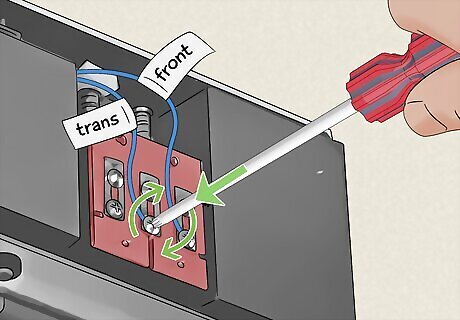
Attach the wires to the terminals and tighten the screws. Take a pair of pliers and bend the end of each wire into a J shape. Then, use your labels to hook each wire over the correct terminal on the chime unit. Simply use your screwdriver to tighten the screws so the wires are secured to the terminal but not crushed under the screw.
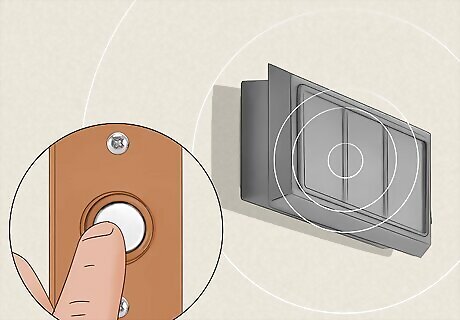
Put on the cover, turn on the circuit breaker, and test the doorbell. Snap or screw the cover onto the chime box. Then, flip the chime unit’s switch to the “On” position on your circuit breaker. Simply press your doorbell to hear your new chime. If your chime unit isn’t working, there might be a problem with the wiring. Just check that the wires are attached to the correct terminals and that each connection is secure.




















Comments
0 comment